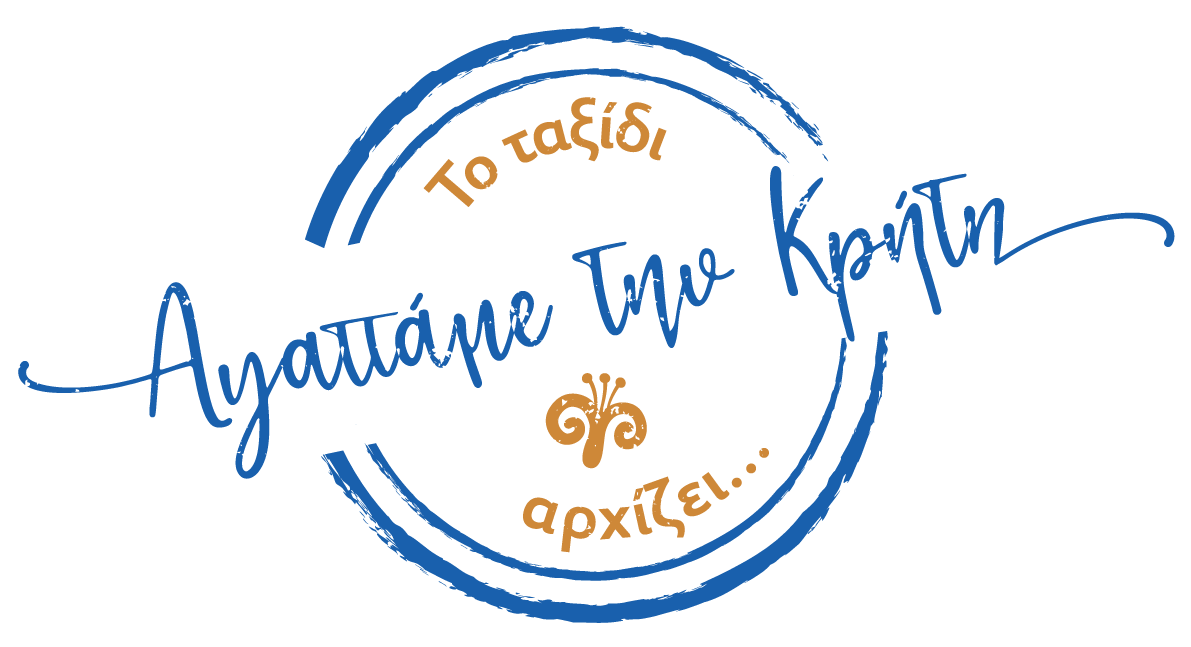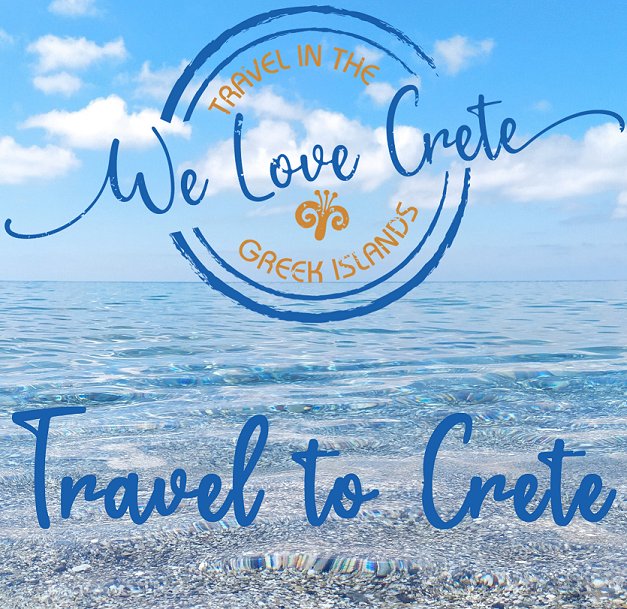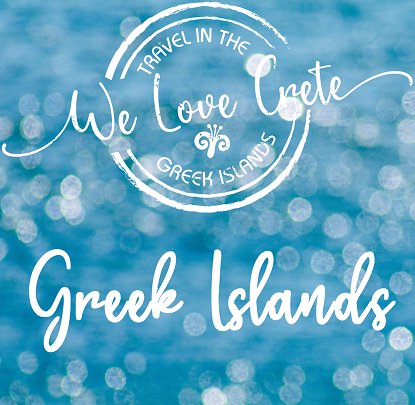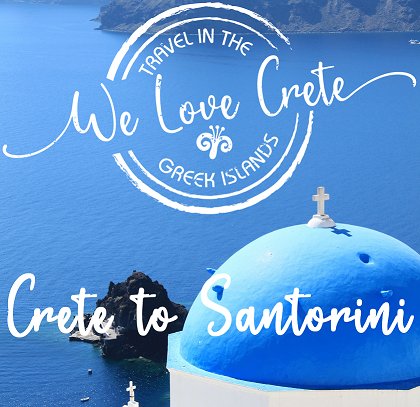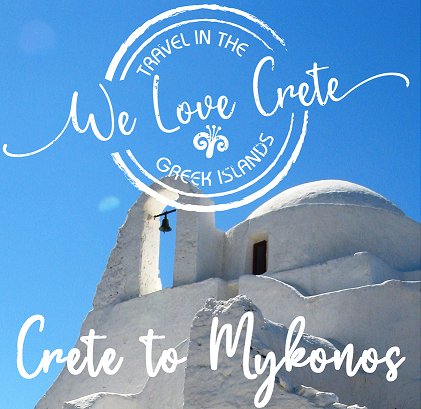- Home
- Cretan Nature
- Animals of Crete
This page may contain affiliate links, see our disclaimer here.
Animals of Crete
By Katia Luz
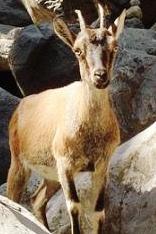
Animals of Crete - the most common animals to be found on
Crete these days are domesticated farm animals such as dogs, cats,
goats, donkeys, sheep, pigs and chickens.
Native animals are rare due to the reduced habitat on the island, clearing has had a profound effect on the ecology of the island, and the dry Mediterranean soil and forests take a long time to regenerate.
The island is now dominated by grazing and agriculture; mostly olive and grape production. There are also a growing number of hot houses for other vegetables such as tomatoes and bananas. These traditional agricultural areas don’t hold much habitat for native animals and birds.
Hunting has also had a profound effect on both mammal and bird populations, and is still common today although protected by law. The Cretan character does not bend well to legislation and the message is not getting through to everybody regarding the low populations of many creatures still hunted in the mountains.
Below we will focus on the native animals of Crete.
Kri Kri Goats
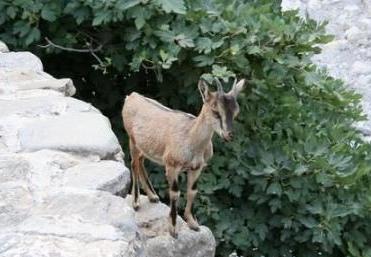 Animals of Crete - Kri Kri goats
Animals of Crete - Kri Kri goats
The most famous of the Cretan animals is the mountain goat named the Kri Kri Capra aegagrus creticus.
These goats are thought to have been brought from Persia thousands of years ago. Most zoologists now treat the goat as native to Crete, and make a distinction between the Kri Kri and domestic goats.
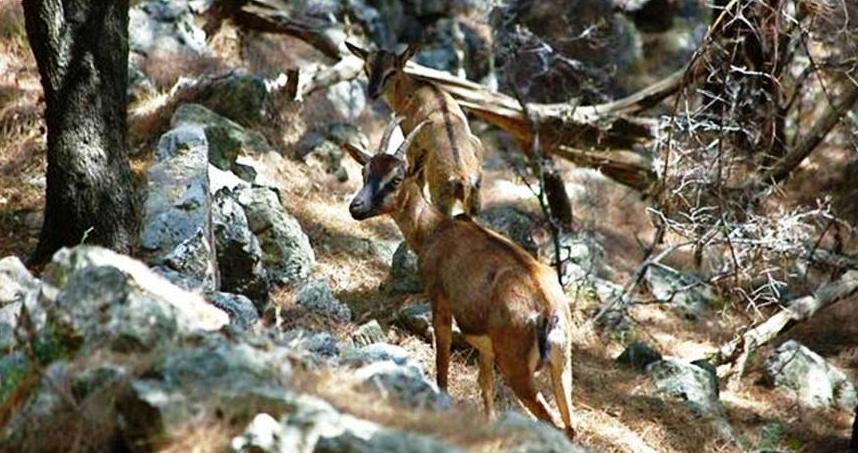 Kri Kri Capra aegagrus creticus
Kri Kri Capra aegagrus creticus
Animals of Crete - Cretans identify strongly with the mountain goat in his independent, tough character that can survive in the rugged Cretan mountians. The Kri Kri is known as the "wild one" agrimi, αγρίμι. Many symbols of the Kri Kri and names in their honour can be found in Crete. For example the symbol of the Natural History Museum of Crete, above, shows the Kri Kri.
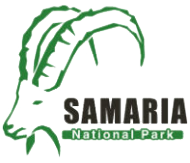
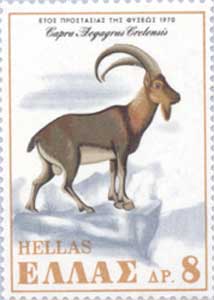
The Kri Kri is a protected species and in 1962 the Samaria Gorge National Park was declared in part to protect these mountain goat herds. Population programs have also been undertaken on some of the larger Cretan islands such as Dia, north of Iraklion, and Theodorou, opposite Plakias and Agii Pandes.
The conservation status of the Kri Kri is "vulnerable". The threats to its population are human disturbance such as recreation/tourism, which is currently ongoing, harvesting such as hunting/gathering which is also ongoing and changes in native species dynamics, such as breeding with other goats, which is also ongoing.
Both of Greece’s only two native mammal species are found on Crete – the Cretan Shrew and the Cretan Spiny Mouse.
Other mammals found on the island are the Cretan marten, badger and dormouse. There are also many reptiles, frogs, insects and molluscs adding to the ecology of the island. There are no deadly snakes, and although scorpion stings in Crete can be very painful to humans, they are not fatal.
Acrotiri Park

On Acrotiri peninsula in Chania is the Park for the Preservation of Fauna and Flora run by the Technical University of Crete. The park is open to visitors between 8am and 4.30pm Monday to Saturday. Here is a quote from the website about fauna in the park:
" There are small mammals such as hares Lepus europaeus, hedgehogs Erinaceus concolor, beech martens Martes foina, badgers Meles meles, least weasels Mustela nivalis, rats and mice Rattus sp. and Mus sp. and bats Tadarida sp., Rhinolophus sp. Pipistrellus sp., Plecotus sp..
The reptiles European cat snake Telescopus fallax, Balkan green lizard Lacerta trilineata Erhard's wall lizard Podarcis erhardii are also encountered in the Park. "
Below is a location map of the Acrotiri Park:
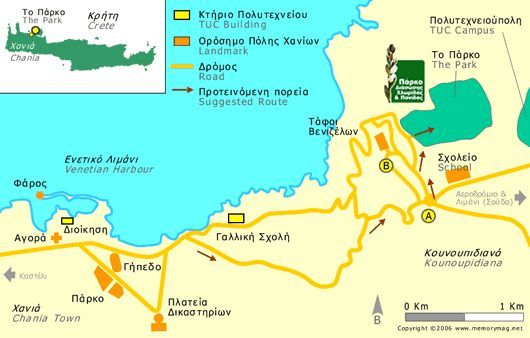
For more information see www.park.tuc.gr
Wild Cat
|
Fourogatos |
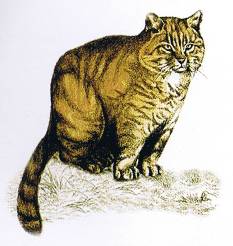 |
Animals of Crete

Kri Kri - Capra aegagrus creticus

Spiny Mouse of Crete - Acomys minous
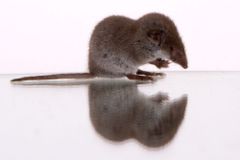
Lesser White Toothed Shrew - Crocidura suaveolens
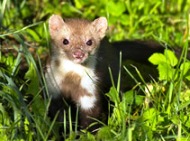
Beech Marten - Martes foina
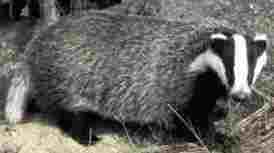
Badger - Meles meles
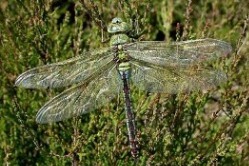
Emporor Dragonfly - Anax imperator
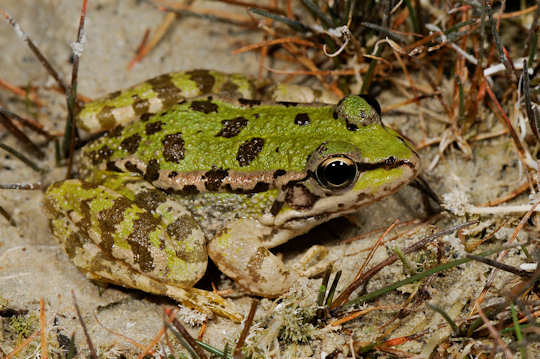
Cretan Frog - Pelophylax cretensis

Leopard Snake - Zamenis situla
Discover the animals of Crete on your walks and hikes in Crete, see our ecology and conservation pages here

Leave only footprints when you walk and hike in Crete - take all your rubbish with you and don't build any of those silly piles of rocks. Leave it as you found it for the local animals.
Bird Watching in Crete

Raptors and other birds can be seen in many areas of Crete. Cliffs and mountains are home to the Bearded Vulture - above - as well as Golden Eagles, Griffon Vultures and the Peregrine Falcon.
Mount Koutroulis, Mount Agios Dikaios and Modia Plateau in south-western Crete are an important biotope for the rare Bearded Vulture.
The Bramiana Reservoir inland from Ierapetra is a good spot to see all birds of Crete, especially birds of prey as well as gulls and migratory birds. Keep your eyes alert to see Eleanora's Falcon.
Our bird page shows you some of the best birding locations in Crete from west to east as well as a list of the most common birds and their scientific names.
More about bird watching in Crete here.
Accommodation
A central location in each region from where to base your hiking and nature explorations in Crete.
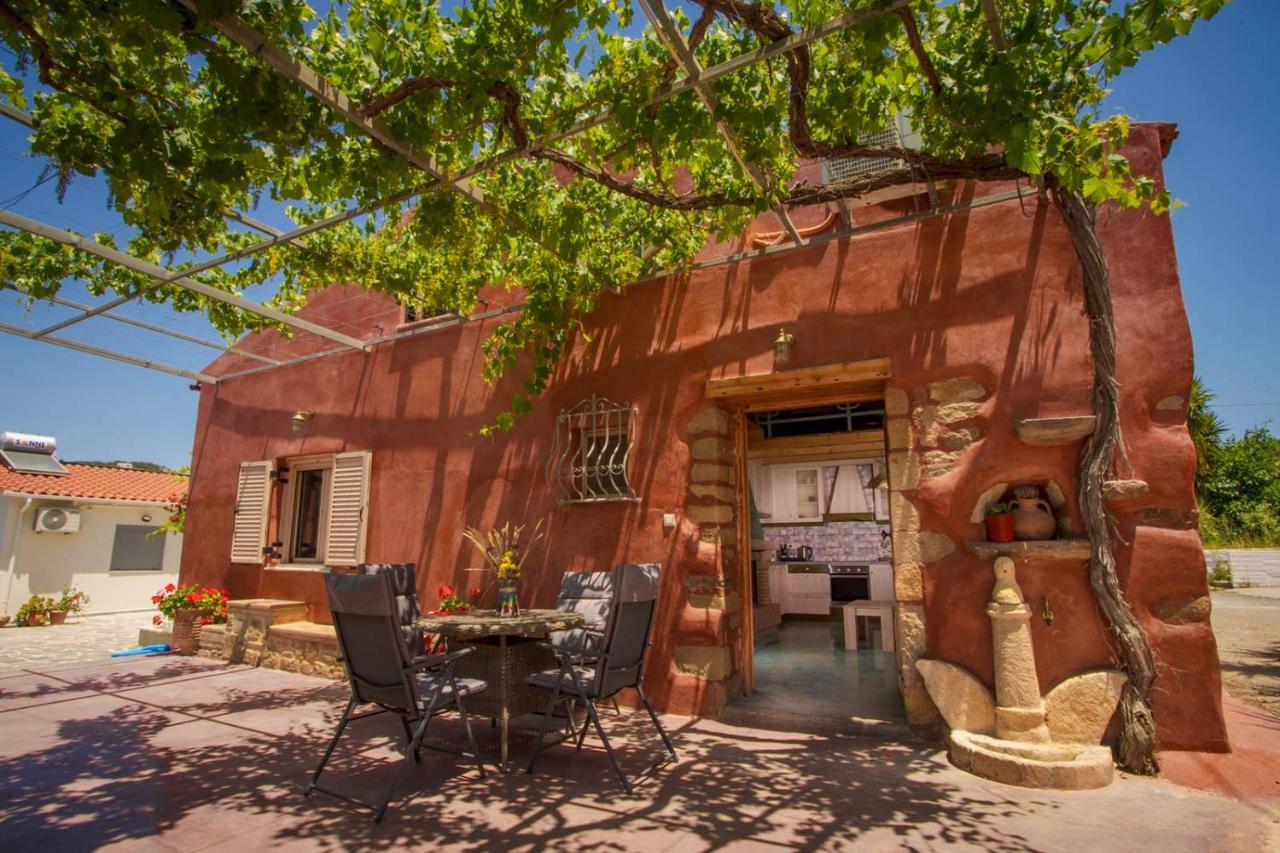
Avocado Villa Iason - in the village of Sirili just 20 km from Chania town, 4 km from the beach and less than 3 km to the national road. This beautiful self-catering home welcomes 5 guests in 2 bedrooms with your friendly host on hand for all the local knowledge you may require.
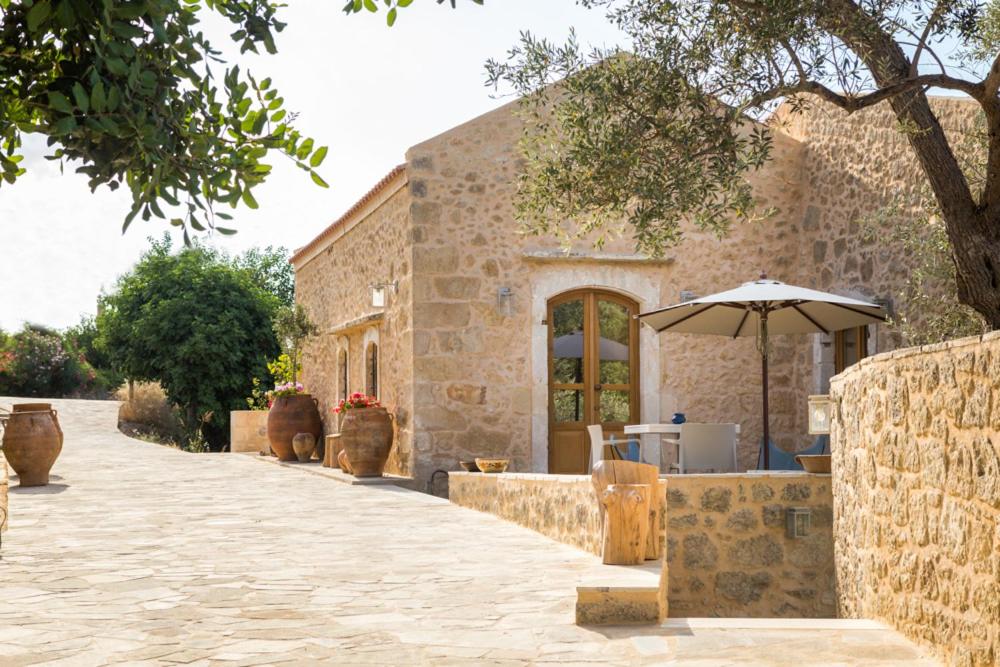
Kapsaliana Village Hotel is very central in the Rethymnon region. A beautiful property with an authentic traditional village experience. Stylish and modern, convenient as a base for birding. Choose from a variety of accommodation options. Views to the sea, lovely local breakfasts and warm friendly service.
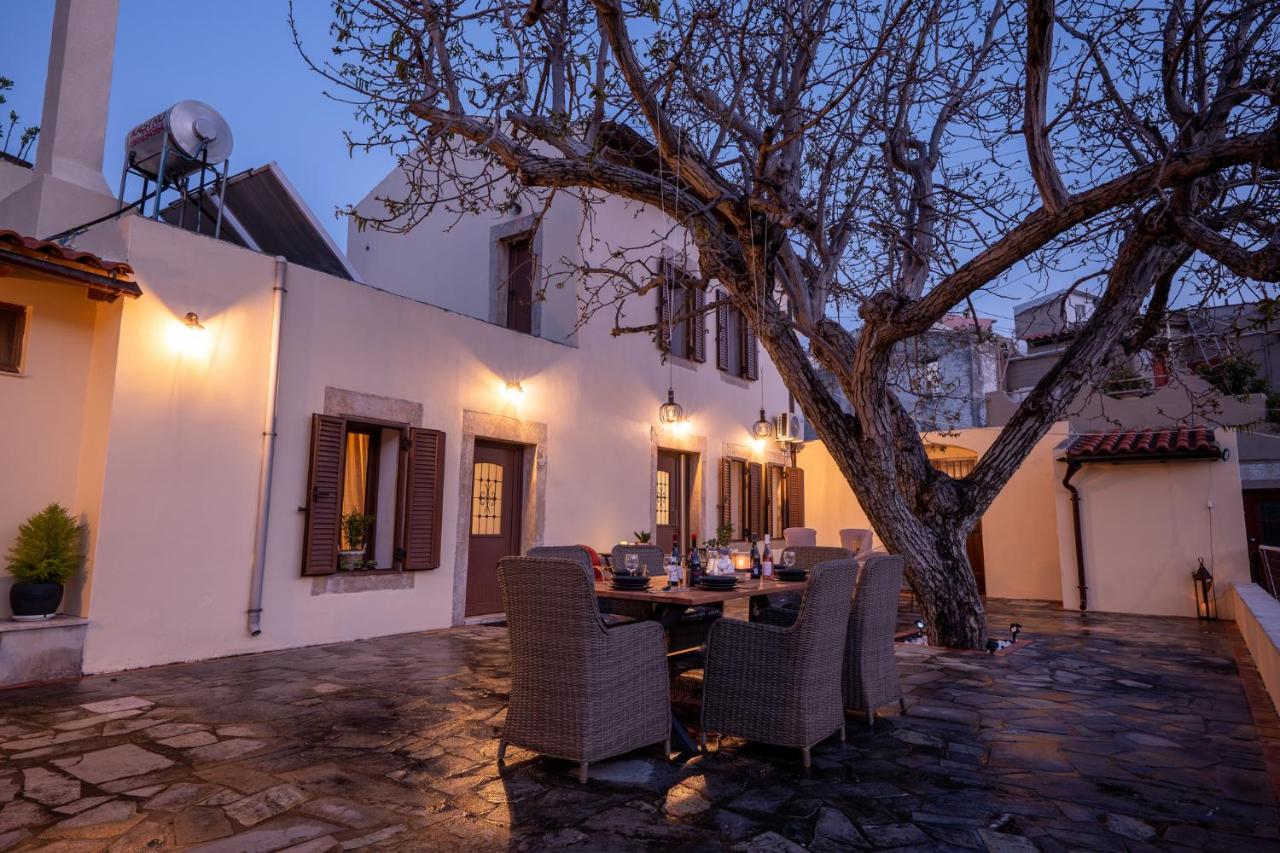
Walnut Tree Villa - this home is in the village of Epano or Upper Archanes, in central Heraklion. Offering 2 bedrooms welcoming 5 guests with ease. Enjoy the evenings in the leafy courtyard. A cosy and homely stay in the centre of the village, with a large parking space. Receive exceptional local hospitality. Set in countryside with a gorge nearby and endless rural drives in every direction. Ideal for nature walks, hiking and birding.
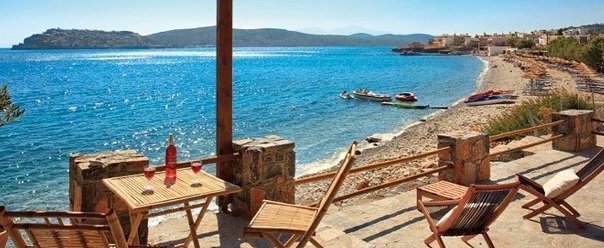
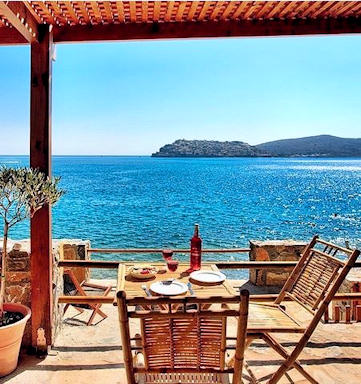
Plaka Beach Cottages
- set directly on the sea with private beach. Enjoy your terrace
overlooking Spinalonga Island. Just so simple and beautiful. Ideal for
nature-lovers. These three
cottages welcome 2 adults each. An easy walk from the hamlet of Plaka.
This makes an ideal base from which to explore eastern Crete and visit
the many natural places.
"Superb location by the water, quiet, small village of Plaka is very nice. Apartment with complete equipment and private parking. Great bed!"
Getting To Crete
Take a 1 hour flight from Athens to Heraklion with Aegean Airlines or Olympic Air, with many flights available per day.
Or take a 9.5 hour overnight ferry from Pireaus port of Athens to Heraklion port.
More on flights and ferries below.
Car hire in Crete is a really good idea as it is a large island 60 km by 260 km. There is so much to explore.
When you book with our car rental partners - Rental Centre Crete - you are supporting a local company with excellent service and easy online booking. We are sure you will be well looked after by the team. Choose from hybrid, electric or regular vehicles.

We trust you have enjoyed these tips from the We Love Crete team. Evíva!

Yiásas!
Anastasi, Apostoli & Katia
are the We Love Crete team
We just love sharing our passion for Crete, Greece and travel
About us Contact Us Kaló taxídi!
About the Team
Yiásas!
Anastasi, Apostoli & Katia
are the
We Love Crete team
We just love sharing our passion for Crete, Greece and travel
About us

